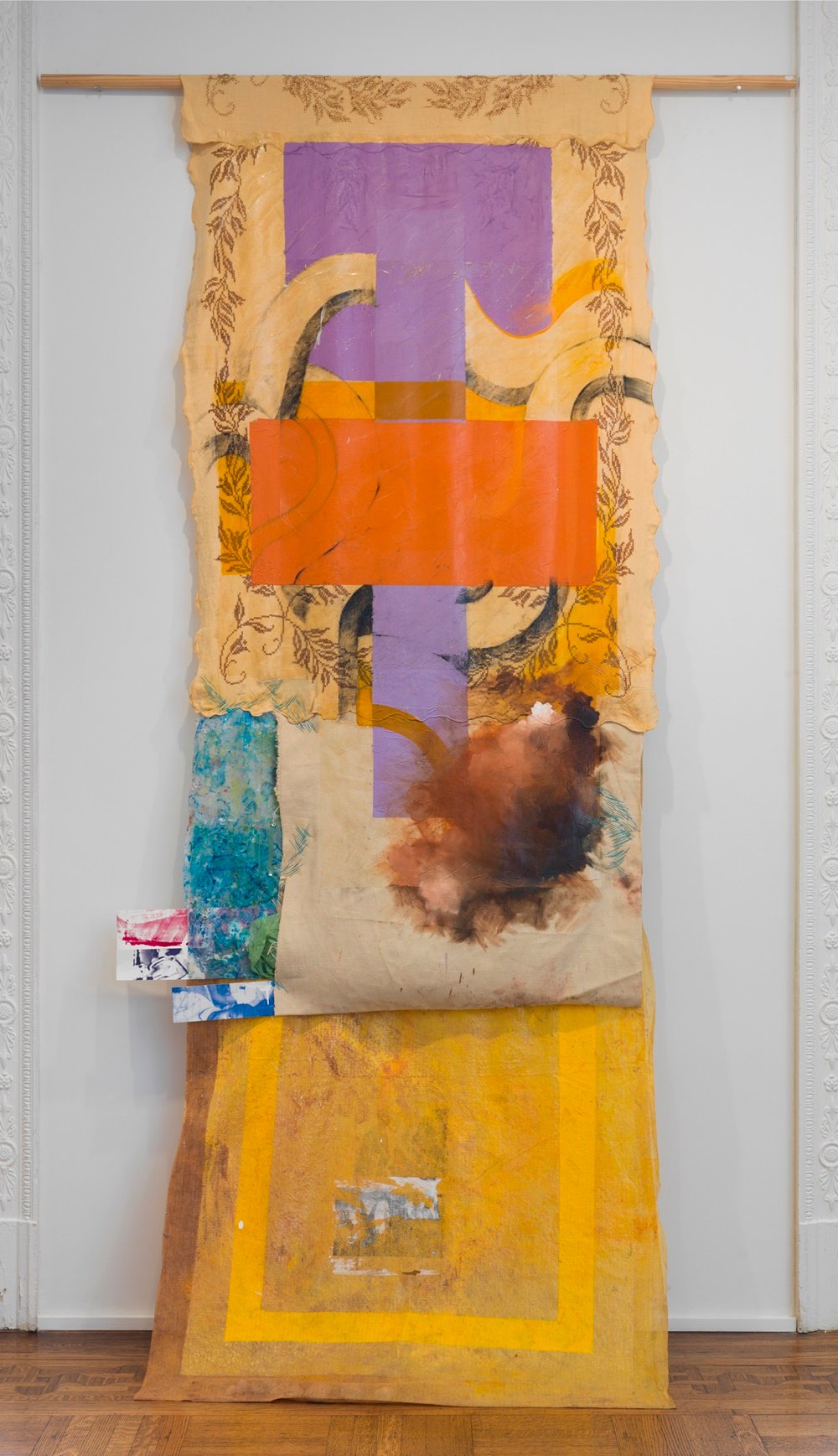
To say that Tomashi Jackson’s first solo show at Tilton Gallery is creating buzz is putting it mildly. “The Subliminal Is Now” has been drawing a steady stream of eager visitors since it opened in November. Giving the show a further boost, the gallery held a discussion with the artist and a screening of her video work.
In this show, the artist, who graduated from the Yale School of Art earlier this year, tackles both issues of historical racial segregation and those related to current day racial tensions by exploring how color perception affects the value of human life in public space.
Her process for these works, which include mixed-media collages, painting, and video, is rooted in her careful study of the court transcripts of Brown vs. the Board of Education of Topeka, Kansas, the historic Supreme Court case argued and won in 1954 by attorney Thurgood Marshall and his team.
During the creation of this recent body of work, Jackson was reading Interaction of Color (1963), Josef Albers’s handbook and teaching aid. She started seeing similarities in the terms used to describe both chromatic and societal rules about color interaction such as boundaries, purity, and mixing. Jackson then used the conclusions as metaphors for her practice in paint, knitting, and video. Her intriguing and lengthy artwork titles incorporate elements from the legal cases they reference.
“We think it’s very smart and beautiful work at the same time,” Connie Rogers Tilton, said in a phone interview. She and gallery owner Jack Tilton first encountered the work on a studio visit to Yale acting on a tip from friend and fellow Tilton artist Martha Tuttle. “While Jackson’s work is grounded intellectually in political, social, and art historical content,” Rogers Tilton added, “ultimately these are very strong and beautiful paintings.”
Many of Jackson’s paintings incorporate large pieces of collaged and painted gauze that hang like tapestries from rods affixed to the wall. They also feature printmaking details and photo documentation of Brown-related cases along with contemporary imagery.
Jackson describes the videos as being linked inextricably with the subject matter in the paintings, as both speak to racist brutality and policies both present and past. “They are collages of footage of moments of recent violence, intertwined with images of Jackson’s paintings and performances including those of the artist and a colleague, who, with their faces obscured by her knitted ‘color studies,’ assume stress poses, held for 60 seconds or more, derived from the original videos—for example the image that went viral when a policeman forcibly restrained a young girl in her bathing suit after a pool party. These multilayered videos are extremely well done and have a very powerful impact.”
The title of the show is inspired by the notion of a sublime visual experience described by Barnett Newman in “The Sublime is Now,” an essay published in The Tiger’s Eye magazine in 1948. According to a gallery statement, Jackson concurs with Newman’s theory that abstraction is a tool for intellectual content as well as that art is “inherently political and potentially transformative.”
Jackson, who was born in Houston in 1980, currently teaches drawing at the Massachusetts College of Art and Design in Boston. She lives and works in New York City and Cambridge.
“The Subliminal Is Now” is on view at Tilton Gallery, 8 E 76th St, New York, through January 7.